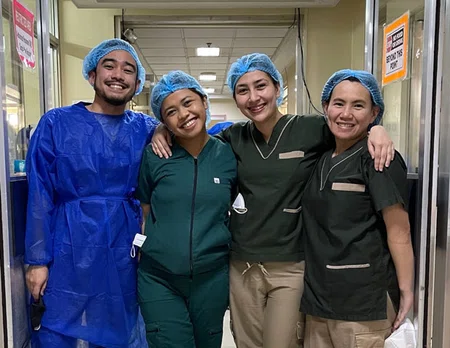© 2025. Houston Methodist, Houston, TX. All rights reserved.


In this
issue

WELCOME
NURSING SCIENCE

Climate, Health, and Nursing Tool (CHANT): A confirmatory factor analysis

Climate Change and Global Health: Emerging Challenges and Implications for Nursing Practice
EDUCATION

Evidence-Based Education Initiatives: Global Education Collaboration with International Nurses

An Interview with Cathy Easter from Houston Methodist Global
PRACTICE

Maternal Healthcare Disparities Among African American Women

We are the WORLD – Fostering Cultural Understanding
PROFESSIONAL DEVELOPMENT
MAGNET

Going Global with Magnet: The Role of Professional Nursing Organizations

Magnet Program Directors Support Nursing Excellence in Mexico

Celebrating the 5th Anniversary of DiscoveRN
FROM OUR TEAMS

ABOUT DISCOVERN
FROM OUR TEAMS
The Impact of Global Cultural Competence for The Bedside Patient Care Assistant
By Latoya Clower, MSN, RN, CVRN-BC,
Professional Development Leader,
Houston Methodist Hospital
By Latoya Clower, MSN, RN, CVRN-BC,
Professional Development Leader,
Houston Methodist Hospital

As the world grows more interconnected and patients become more diverse, nursing has to adapt to those changes. As a result, global and cultural competencies have become essential to address health equity, ensuring that nursing staff can deliver innovative, holistic and effective patient care (World Health Organization, 2025).
Global nursing can be defined as a field of study, research and practice focused on improving health and achieving health equity worldwide (WHO, 2025). As defined by Mbango (2023), cultural competence emphasizes balancing respect for diversity with honoring individual values, preferences and needs. From the patient's perspective, the partnership between the bedside Registered Nurse (RN) and the Patient Care Assistant (PCA) is foundational to high-quality care. While the RN oversees clinical assessments, medication administration and care planning, the PCA often maintains the most consistent presence at the bedside. This frequent interaction enables the PCA to detect subtle changes in the patient's condition that may not be immediately evident during routine assessments.
The PCA is critical in early intervention, supporting timely clinical decisions and improving patient outcomes. This rapid identification is especially important as patient populations become increasingly diverse, promoting expansion of learning opportunities outside the acute care hospital setting. Current research implies that, to meet this challenge, many health entities are being pushed to incorporate:
- Community-Based Learning: Expanding learning beyond hospitals into community settings where health care professionals can engage with people from various cultural backgrounds.
- Collaborative Partnerships: Working with community leaders and organizations to understand cultural norms, health beliefs and practices.
- Experiential Learning: Encouraging immersion experiences, service learning and cultural exchange programs to deepen understanding.
- Curriculum Integration: Embedding cultural competence into every aspect of organizational values, from communication skills to clinical decision-making.
- Enhance cultural competence: leading to more respectful and effective care.
- Build trust with patients and families, especially those from historically marginalized groups.
- Ensure care is patient- and family-centered, respecting individual values, beliefs and preferences.
- Promote equity by addressing social determinants of health and systemic barriers.
References:
Gray,K.. (2024). Cultural Competency Challenges Certified Nursing Assistants Experience in Providing Palliative Care. J Gerontol Nurs. 2024 Jul;50(7):35-41.
Mbango, C. (2023). Incorporating global and cultural competencies in nursing education. Nursing 53(2):p 15-1
World Health Organization. (2022.) Social determinants of health. www.who.int/health-topics/social-determinants-of-health. Accessed May 21, 2025.









